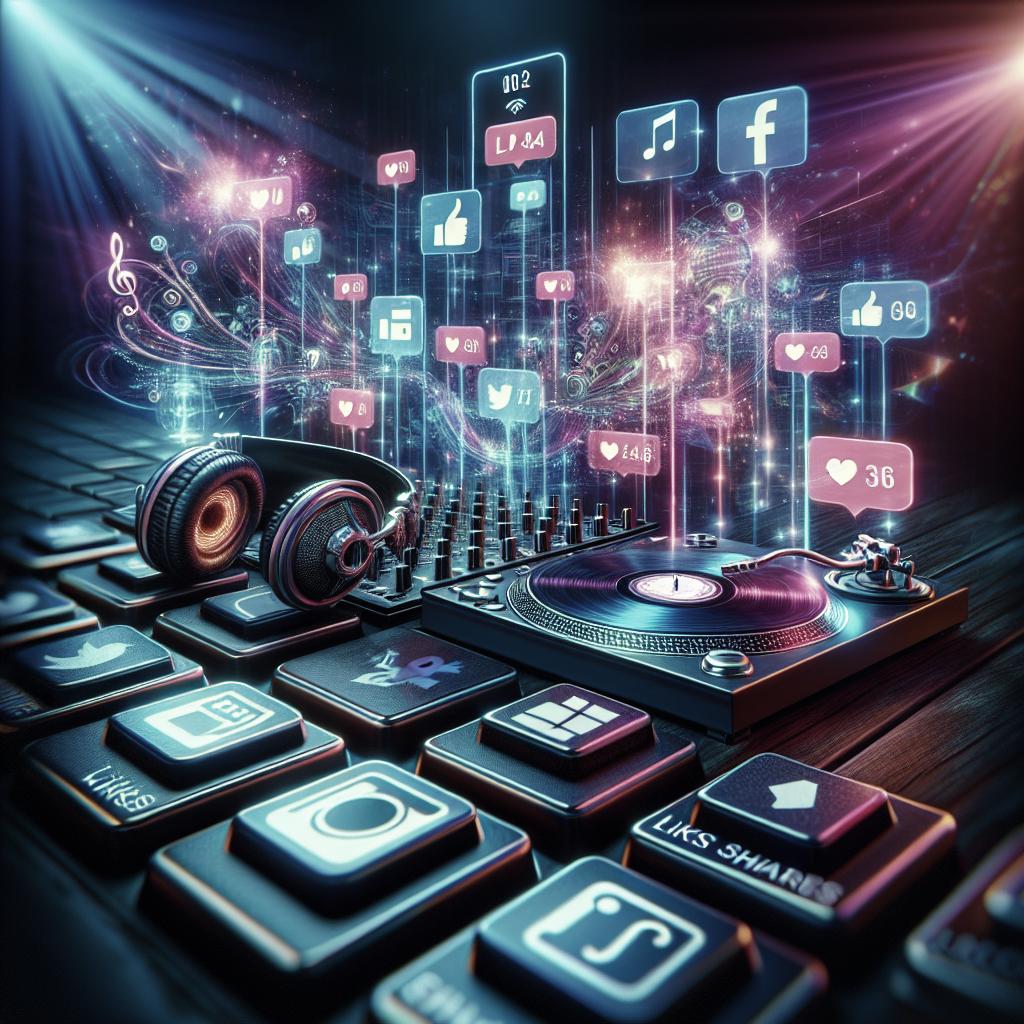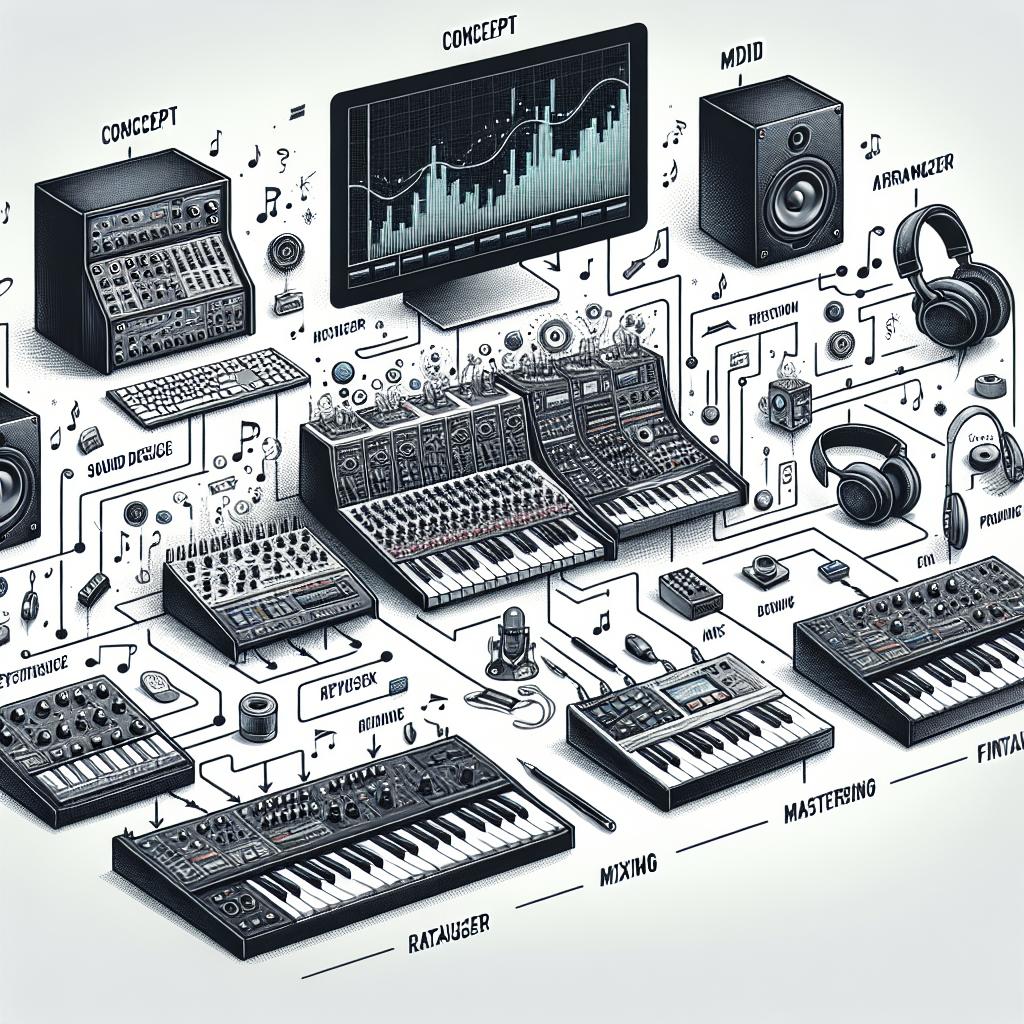< lang="en">
In the fast-paced world of electronic music, standing out and capturing the attention of listeners can be a challenging feat. Harnessing the power of social media and digital platforms is essential for artists who aim to make their mark. This blog post will guide you through effective strategies, including playing live gigs, pitching your music to Spotify playlists, maintaining an engaging social media presence, and creating your own unique branding. Additionally, insights from a noteworthy interview with Linn Elisabet will provide inspiration for promoting EDM music with a purpose. Let’s dive in and explore the multifaceted approach to promoting electronic music on social media.
Linn Elisabet Interview: Acts of Rebellion and Electronic Music With a Mission
Linn Elisabet is an electronic artist known for her revolutionary approach to music production and performance. She emphasizes the importance of creating music with a message, often addressing social issues and challenging the status quo. Her work serves as a powerful example of how electronic music can be a medium for activism and change.
In an exclusive interview, Linn shared her insights on the intersection of music and social justice. She believes that artists have a responsibility to use their platform for good. Her approach to promoting her music involves not just showcasing her beats and rhythms but also engaging her audience in meaningful conversations. This blend of artistry and activism sets her apart in the electronic music scene.
Promoting EDM music
Playing live gigs is the way to promote EDM music
Performing live gigs allows you to connect with your audience in a tangible and immediate way. These performances offer real-time feedback and energy exchange, making them invaluable for any aspiring electronic musician. Whether it’s clubs, festivals, or local events, live gigs help build your reputation and broaden your exposure.
Live performances also give you opportunities to network with other artists, promoters, and industry professionals. By delivering memorable shows, you not only attract new fans but also potentially secure future bookings and collaborative projects. The key is to deliver an engaging set that resonates and sticks with your audience long after the lights come up.
Be an opening act
Being an opening act for a more established artist or group is an excellent strategy to gain exposure. Opening for artists with a similar musical style allows you to tap into their fan base, leading to increased followers and listeners for your own music. It’s a chance to present your sound to an audience that’s already inclined to enjoy it.
Take advantage of these opportunities by promoting your opening sets on social media. Use posts and stories to announce these gigs, share behind-the-scenes content, and engage with fans who attended. Capturing and sharing these moments helps cement your presence in the electronic music community.
Pitching your music to Spotify playlists
How do I pitch music for Spotify?
Spotify playlists can be a significant game-changer for electronic musicians. To pitch your music, ensure your track is uploaded to Spotify for Artists. From there, you can submit it for playlist consideration. This process can help your music reach wider audiences who are constantly seeking new and exciting electronic sounds.
Timing and strategy are crucial for successful pitching. Release your music with some lead time so that curators have enough notice to consider adding your track to their playlists. This methodical approach increases your chances of being featured.
Make a compelling case for your pitch
When pitching your track, you need to make a compelling case. Describe what makes your music unique and why it deserves a place on specific playlists. Highlight any promotional plans you have and any previous successes or notable features.
Personalize your pitch to the playlist curators by showing that you understand their audience and the type of music they prefer. A well-crafted pitch that aligns with the playlist’s theme and vibe will stand out more than a generic submission.
Create an EPK
An Electronic Press Kit (EPK) is your music business card and a comprehensive package of your work. It typically includes a biography, high-quality photos, music samples, press coverage, and contact information. An EPK makes it easier for playlist curators and media professionals to discover and promote your music.
Keep your EPK updated with your latest releases and achievements. Share it with playlist curators, radio stations, venues, and journalists when pitching your music. A professional and compelling EPK can significantly enhance your promotional efforts.
Maintain a social media presence
Find an audience
Identifying and connecting with your target audience is crucial for any musician. Use data analytics tools available on platforms like Facebook, Instagram, and Twitter to understand your audience demographics. Knowing who listens to your music helps tailor your content effectively.
Engage with your audience by responding to comments, messages, and mentions. This interaction builds a loyal fan base that feels connected to you and your music. Create content that resonates with your audience’s interests and preferences to maintain engagement.
Keep a schedule
Consistency is key when maintaining a social media presence. Create a content calendar to plan and schedule posts, ensuring a regular flow of updates and interactions. Use a mix of promotional posts, behind-the-scenes content, and user-generated content to keep your profile dynamic and interesting.
Leverage scheduling tools like Hootsuite or Buffer to manage multiple social media accounts efficiently. Posting at optimal times can help maximize your reach and engagement, keeping your audience informed and interested in your musical journey.
Build the hype
Building anticipation for your music releases and events is essential for maintaining interest and excitement. Tease new tracks, behind-the-scenes clips, and exclusive previews to build hype around your releases. Engaging visuals, captivating captions, and interactive content like polls and Q&As can help keep your audience engaged.
Collaborate with other artists, influencers, and brands to cross-promote and expand your reach. Contests, giveaways, and special promotions can also generate buzz and attract new listeners to your music.
Create your own branding
Your personal branding sets you apart in the crowded digital landscape. Develop a cohesive and recognizable visual identity that reflects your music style and persona. This includes your logo, color scheme, typography, and overall aesthetic used across all your social media platforms.
Consistency in branding helps create a strong visual association with your music, making it easier for fans to recognize and remember you. Your branding should convey your unique identity and resonate with your target audience, establishing a lasting and memorable presence in the electronic music scene.
Final Thoughts
Promoting electronic music on social media requires a multifaceted strategy that involves live performances, leveraging digital platforms like Spotify, maintaining an engaging social media presence, and creating a strong personal brand. By implementing these strategies and drawing inspiration from artists like Linn Elisabet, electronic musicians can effectively reach and grow their audience.
To conclude, here’s a summary table of the main strategies discussed in this blog post:
| Strategy | Description |
|---|---|
| Playing live gigs | Engage with your audience directly, build reputation and network with industry professionals. |
| Be an opening act | Performing as an opener for established artists helps tap into their fan base. |
| Pitching to Spotify playlists | Submit your tracks for playlist consideration to reach a wider audience. |
| Maintain social media presence | Engage with your audience consistently and create a content schedule. |
| Create your own branding | Develop a cohesive visual identity that reflects your music and persona. |


